By Abigail Marie P. Yraola, Deputy Research Head
THE financial technology (fintech) scene in the Philippines has been booming with growth as more consumers turning to digital payment platforms to manage funds and avail financial services.
A couple of years back, it could be somehow traced to the pandemic prompting this shift of consumers adopting to digital payments and, since then, have turn to these services.
In the latest Philippines Fintech Report (https://tinyurl.com/286ryvut) published by Fintech News Philippines in partnership with Fintech Alliance PH, the country has surpassed its target of digitalizing 50% of digital payments volume based on the 2023 report on E-Payments Measurement of the Bangko Sentral ng Pilipinas.
The report highlighted that at the end of last year, digital payment transactions made up 52.8% of total monthly retail payments in the country, increasing from 42.1% in 2022.
Additionally, the report showed a thriving fintech sector in the country which is supported by robust government support, increasing digital adoption and a strong commitment to financial inclusion.
In the space of digital payments, comes the use of Buy Now, Pay Later (BNPL) services. And it’s no wonder that consumers have been attracted to these providers as they have become increasingly prevalent.
A BNPL is a payment method that enables consumers to make purchases without paying the entire amount upfront, allowing them to pay in installments over time.
The Philippine market has been proven to be a fertile ground for these kind of services with the younger generation most attracted to it.
TAPPING INTO THE PHILIPPINE MARKET
Early this year, a report (https://tinyurl.com/27v5fdq3) published by Euromonitor International revealed that since its introduction in the Southeast Asia region in 2018, BNPL has experienced a significant rise in popularity, providing consumers with a convenient, flexible and accessible alternative to traditional financial services.
The report also underscored that the region presents promising opportunities for BNPL to expand their operations due to the significant number of unbanked and underserved individuals.
“The Philippines and Indonesia have percentages of unbanked and underserved populations of 76% and 67%, while Vietnam, Malaysia and Thailand follow closely behind with 47%, 40%, and 25%, respectively,” the report said.
By entering these markets, these providers seem an attractive option to fill in the gap for addressing the needs of unbanked and underserved consumers.
Digital Pinoys National Campaigner Ronald B. Gustilo said that consumers use BNPL platforms to purchase goods for they see them as a convenient payment option, particularly for individuals who don’t have the money to pay for the items upfront.
Personally, he does not use BNPL services and prefers to pay for items purchased using credit or debit cards or cash but is aware that many consumers patronize these services.
“BNPLs usually offer fast approval without asking for collaterals and too many requirements to avail their services,” he said in a Viber message.
He added that consumers can make purchases using BNPLs with just a minimal down payment and these are [some] reasons why consumers prefer BNPLs over credit cards and bank loans.
Additionally, he pointed out that the preference over these payment providers over the traditional loan schemes, such as credit cards and personal bank loans, underscores the current economic situation, where the needs of individuals often exceed what they earn or have saved.
YOUNGER GENERATION’S PREFERENCE
Generation Z-ers — those people born between 1997 and 2012 and who represent 32% of Southeast Asia’s population — are reshaping the retail landscape as digital natives, Erwin G. Ocampo, head of product at UnaCash, said in an e-mail.
UnaCash is a BNPL provider in the country, operated by Digido Finance Corp.
Mr. Ocampo added that their heavy reliance on smartphones for social media and online shopping has created unique consumer behavior.
As a result of their financial independence, this certain demographic prefers instant gratification and is likely to adopt digital payment platforms like BNPL.
“This generation is raised in the age of information, making them more empowered to make informed purchasing decisions,” he said.
Mr. Ocampo also highlighted that the “unique financial behaviors and preferences” of the new generation of shoppers have driven the growth of BNPLs in the country.
Anyone would want a convenient, flexible and accessible mode of payment and BNPLs appears to be the best option for that.
Another BNPL provider that tapped into the Philippine market is Neuroncredit Financing Co., Inc.’s Atome PH.
An Atome spokesperson addressed that “popularity” of BNPL to the young consumers can be traced to their experiences of life “firsts” such as job, child, home, among others and may need a way to manage monthly budgets with their salary.
But they also pointed out that given these reasons, the younger generation do not also want to miss out on things to spend such as traveling and purchasing of electronics or such.
For First Digital Finance Corp.’s BillEase’s Chief Executive Officer Georg Steiger, another BNPL provider in the country, consumers are increasingly attracted to BNPL for its transparency and the financial empowerment it offers.
“BNPL services are often available at the point of sale, making them more convenient for immediate purchases and often come with perks such as zero-interest plans and the ability to make smaller, more manageable payments over time,” Mr. Steiger said in an e-mail.
It pointed out that this flexibility is what makes younger consumers drawn to them, where in the latter value financial autonomy and prefer to avoid the long-term commitments associated with credit cards.
BNPLs OVER CREDIT CARDS
Mr. Steiger said that in BNPL services, consumers highly appreciate the clear repayment schedule, which enables them to budget effectively and make informed purchasing decisions.
Additionally, compared with the conventional credit cards which can trap users in a cycle of revolving debt if mishandled, BNPL offers a structured path to financial freedom.
“By breaking payments into manageable installments, consumers can confidently acquire essential items or indulge in desired purchases without the anxiety of hidden fees,” Mr. Steiger said.
Credit cards have been a reliable payment method, but their underlying technology can sometimes leave consumers exposed to security concerns, such as stolen card numbers or unauthorized transactions.
But with BNPLs, it provides a digital native payment solution, featuring enhanced security measures like biometrics within the app, providing peace of mind and minimizing the risk of unexpected charges.
Given these features, consumers are also likely to prefer BNPL for budget management.
Based on a study conducted by UnaCash, four in 10 Filipinos who use BNPL services always use it as a tool for budget planning and management.
It also revealed that 49.6% of respondents have heard of or used BNPL services, while 37.4% have heard about BNPL services but have not used them, which indicates the popularity and awareness of this payment method.
UnaCash’s Mr. Ocampo said that results of the study also depicted that BNPL is an effective budgeting tool.
“This itself is a strong indication that there is market potential for BNPL services in the Philippines as it serves as a tool that allows consumers to have access to certain purchases while segmenting their payment terms,” he said.
For Mr. Steiger, BNPLs are more attractive option for those who are conscious of their budget and helping new-to-credit customers develop healthy borrowing habits and discipline.
“The ability to split payments into smaller, more manageable amounts, helps consumers avoid debt traps and maintain control over their spending,” he said.
Compared with credit cards or loans, these providers provide a clear, upfront payment schedule that makes it easier for consumers to plan their finances.
RISKS AND BENEFITS
But like any other form of payment method, there are potential risks and downsides of using these services.
On the preference over the use of credit cards, Atome said that the key challenge is to provide affordable credit in a careful, risk-managed, and fiscally prudent way, from both a consumer and lender’s perspective.
Atome also underscored the difference of BNPL models from traditional credit cards.
“For BNPL, the moment a user is late with payments, we suspend the account, whereas in credit cards, you can pay minimal sum and continue using the card and get charged high interest on outstanding balance,” Atome said.
This approach prevents the user from accumulating large debts and limits credit exposure.
For UnaCash’s Mr. Ocampo, BNPLs offer flexibility and accessibility in managing finances, which in turn, empowers consumers to make larger purchases without immediate financial strain and contributes largely to credit building.
But he cautioned that responsible usage is essential to avoid potential challenges.
“While it doesn’t require traditional credit history, effective financial planning remains to avoid potential challenges. There is always a way to educate consumers to use BNPL as a tool that can become a valuable asset in modern financial management,” he said.
BillEase’s Mr. Steiger, meanwhile, listed the positive aspects of BNPLs, and why consumers would opt to use it, namely: accessibility, flexibility, and credit building.
The downsides of it, though, include impulse buying, and failure to meet payment deadlines which would result in penalties.
“Consumers may be more prone to overspending due to the perception of deferred payments, which can lead to financial difficulties if no t managed properly.”
Furthermore, he said that when applying for these services, one should consider its financial capability.
Customers should carefully assess their financial situation to ensure they can meet BNPL repayment terms without straining their overall budget.
Choosing the right BNPL provider is also crucial when one is mindful of its interest and fees to prioritize options that offer the most cost-effective solutions.
Consumers should verify the credibility of BNPL providers and ensure they are duly registered under legitimate financial institutions and licensed under government regulatory agencies.
A list (https://tinyurl.com/298jrxdc), provided by the Securities and Exchange Commission (SEC), the regulatory agency supervising the corporate sector, can help consumers choose authorized BNPL services on online lending platforms.
“When considering BNPL, it is essential to prioritize financial responsibility. Consumers must carefully evaluate their budget and spending habits to ensure that they can effectively manage installment payments,” Mr. Ocampo from UnaCash said.
ESTABLISHING BNPL FINANCIAL ECOSYSTEM
“BNPL is playing a key role in expanding financial inclusion in the Philippines, especially for those who are unbanked and underbanked. It can help improve credit building, boost economic activity, and drive competition — resulting in an overall healthy financial ecosystem,” Mr. Ocampo said.
To put it simply, BNPL offers a way to access credit and fully participate in the economy, similar to opening a door to financial opportunities that were previously out of reach.
And a good thing about it, is that it can contribute to building credit histories and by making timely payments, users can improve their credit scores over time.
“This can be a steppingstone to accessing more traditional financial products in the future, such as larger forms of loans or credit cards. It’s a way for individuals to enhance their financial standing and eventually tap into a broader range of banking services,” Mr. Ocampo said.
For Mr. Steiger, BNPL services help promote financial inclusion by providing an entry point to credit for those who may still need to qualify for traditional financial products.
“These services are often integrated with digital platforms, making them easily accessible to those who may not have access to traditional banking services.”
The bottom line, BNPL providers indeed appear to be an option to fill in the gap for addressing the needs of unbanked and underserved consumers.
For Atome, BNPLs, microlending, and insurance are expected to expand.
Additionally, they expect strategic partnerships and collaborations with traditional financial institutions and platforms to provide funding and financing, especially for user segments that are challenging to assess through traditional banking Know Your Customer processes.
Meanwhile, potential developments could include the expansion of BNPL services into new sectors such as healthcare and solar rooftop financing, Mr. Steiger said.
As BNPL continues to grow in popularity, partnerships between BNPL providers and traditional financial institutions, offering consumers a wider range of options and potentially more competitive terms may be anticipated.
“BNPL providers such as ourselves are more likely to forge strategic partnerships with retailers, banks, and other broader financial institutions to maximize our financial solutions,” Mr. Ocampo said.
He added that with significant developments underway for BNPLs, competition among these providers is expected to intensify, leading to lower fees and better terms for consumers.
But in turn, this may be beneficial as it aims for technological advancements that will bring innovations and personalized offerings based on the needs of the consumers.







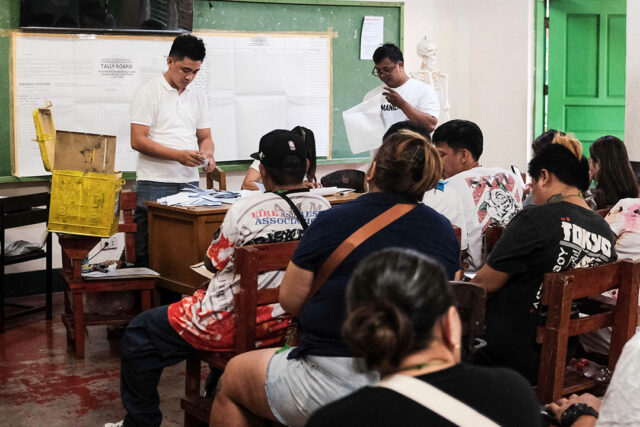


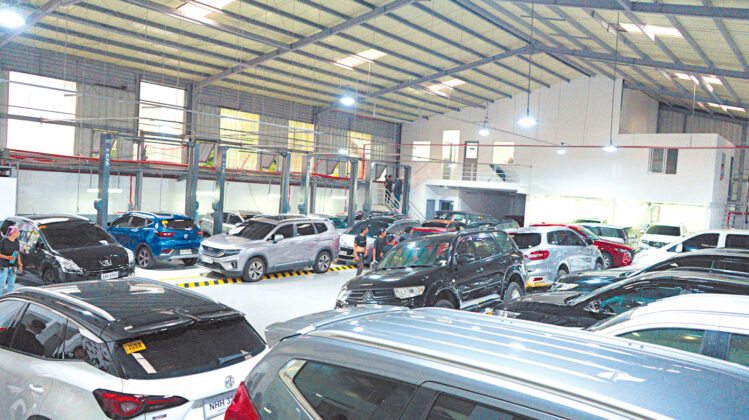
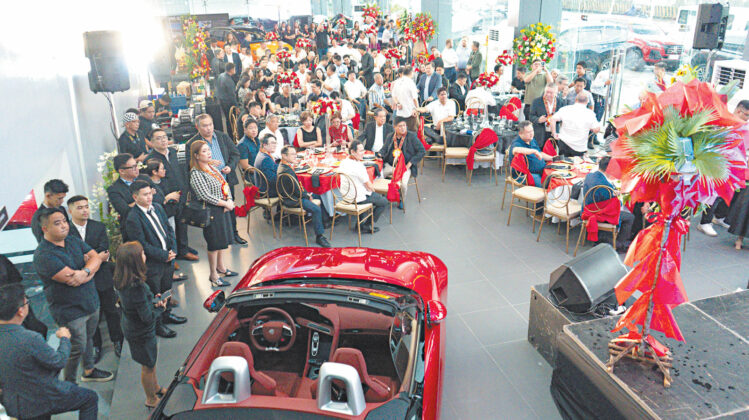


![Wavy_Bus-23_Single-04-[Converted]](https://www.bworldonline.com/wp-content/uploads/2024/09/Wavy_Bus-23_Single-04-Converted-640x360.jpg)
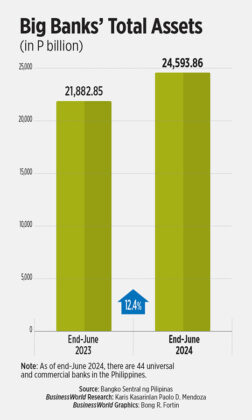
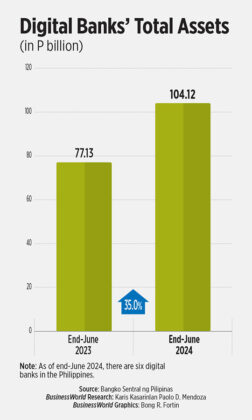
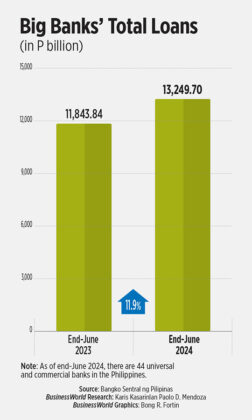

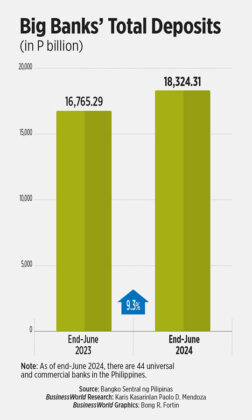


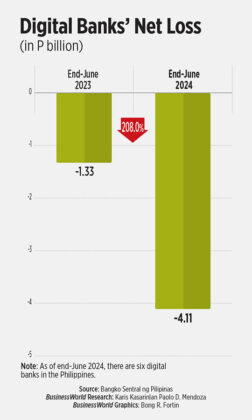







![Wavy_Bus-31_Single-05-[Converted]](https://www.bworldonline.com/wp-content/uploads/2024/09/Wavy_Bus-31_Single-05-Converted-640x360.jpg)